Last Chance to Catch NYC's Holiday Notalgia Train
We met the voices of the NYC subway on our nostalgia ride this weekend!



Just a thirty minute train ride from Grand Central Terminal, the City of New Rochelle has it all – whether you’re looking for a day trip out of New York City, seeking a more affordable place to live, or planning for a weekend getaway. There’s a historical downtown with beautiful architecture just steps from the train station, a diverse food scene with international flavors, gorgeous waterfront parks, a diverse and creative-minded population, and a distinctly urban-suburban feel for the best of both worlds.
New Rochelle has also re-emerged on the national main stage in the last few weeks, as one of the $1 million winners of the Bloomberg Philanthropy U.S. Mayors Challenge, in acknowledgement of the city’s innovative use of immersive virtual and augmented reality technologies for citizen engagement within the city development process. There’s certainly a need for it, as a 2015 rezoning of downtown New Rochelle has spurred a development renaissance that will bring over 6,000 new housing units, 2.4 million square feet of office space, 1 million square feet of retail, and 1,200 hotel rooms. New York City-based developer RXR Realty was designated as the Master Developer of downtown New Rochelle.
The City of New Rochelle also responded to the request for proposals for Amazon HQ2. In its application, the City highlighted its more than 8.6 million square feet of downtown space pre-approved for fast-track development, as well as its superior location, access to transportation, proximity to a talented and educated workforce, commitment to sustainability, and the availability of extensive government incentives. When Amazon’s HQ2 opens in Long Island City and when the Penn Access project is completed, New Rochelle will actually be the closest suburban train station to the headquarters, as Metro-North trains will pass directly through Long Island City en route to Penn Station.
Fifteen developments are in the works or in progress in downtown New Rochelle. If all goes according to plan, within the next few years, New Rochelle will re-emerge as a major player, uniquely situated to serve as not only a commuter city supporting New York City, but also as an economic driver in its own right within the greater region.
As Barbara Davis, the city historian of New Rochelle tells us, the renewed interest in New Rochelle is not surprising: “The city has attributes that have attracted people for a long time – people of all backgrounds and people of all interests: Its proximity to Manhattan but also its waterfront – we have 9.3 miles of waterfront, tremendous access with our parks, and all the recreation that that brings…And then we have the topography – it’s a very hilly, gorgeous tract of land that was first founded because it was so fertile…with lots of areas to experience nature, strong schools, and amazing neighborhoods.”
Get to know New Rochelle with our guide to the must-visit places to visit in the city!
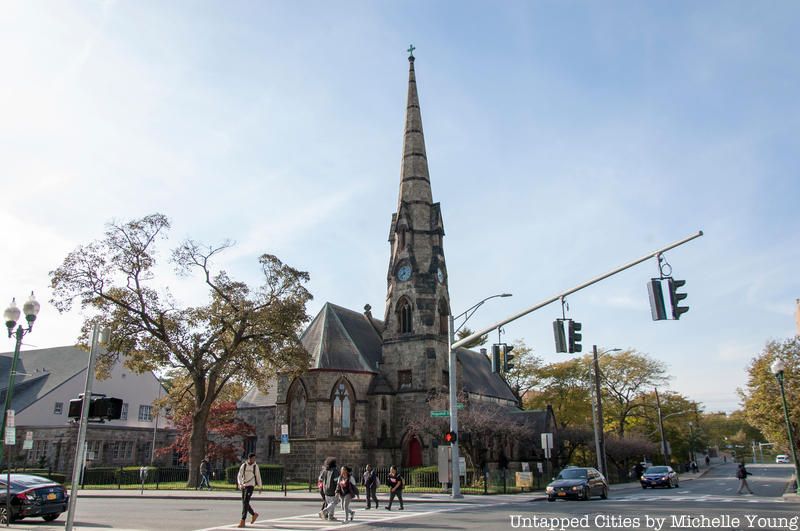
New Rochelle was founded in 1688 by French Huguenots, a Protestant religious group who fled France when the Edict of Nantes, which gave Protestants significant rights within the Catholic country, was revoked by King Louis XIV. Many of the early settlers came from La Rochelle, a seaside port town in Western France that remains a sister or twin town to New Rochelle.
At the center of the settlement of New Rochelle was the church, which originally encompassed one hundred acres, around which the residents built their homes. In 1709, the congregation decided to become part of the Church of England, taking the name Trinity, and after the American Revolution the church became Trinity Episcopal Church. With this history, it’s no coincidence that Richard Upjohn, the architect of Trinity Church on Wall Street in Manhattan, designed the church that stands today on Huguenot Street.
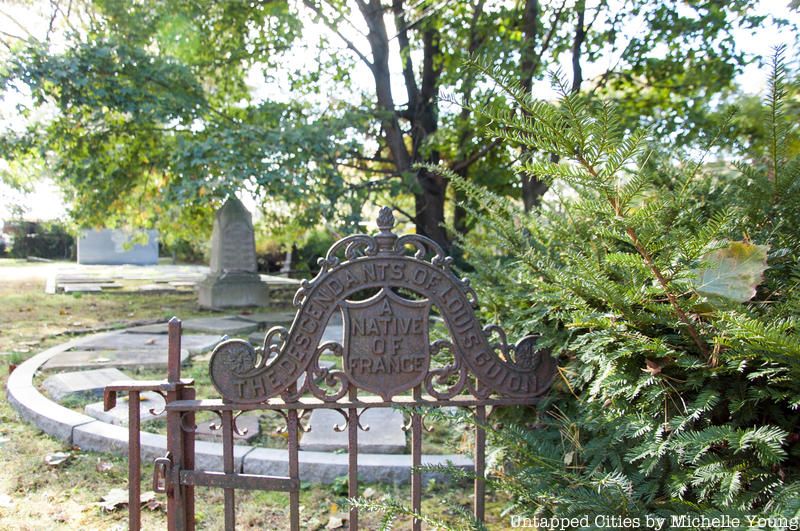
The church is also home to the Huguenot burial ground, which was relocated here after the I-95 expressway cut through the original cemetery. Look out for the section dedicated to the Allaire family, whose tombstones were all deliberately placed down, as well as the oldest tombstone in the cemetery, dating to 1750 which is inscribed in French.

The oldest tombstone in the Huguenot cemetery
A marker for William Allaire is situated just outside the family plot along the fence and tells the story of his involvement as an engineer and assistant to Lieutenant Commander H.H. Gorringe in the epic moving of Cleopatra’s Needle, the ancient Egyptian obelisk, from Alexandra to New York City where it has been located in Central Park since 1881.
Trinity-St. Paul’s Episcopal Church is located at 322 Huguenot Street.
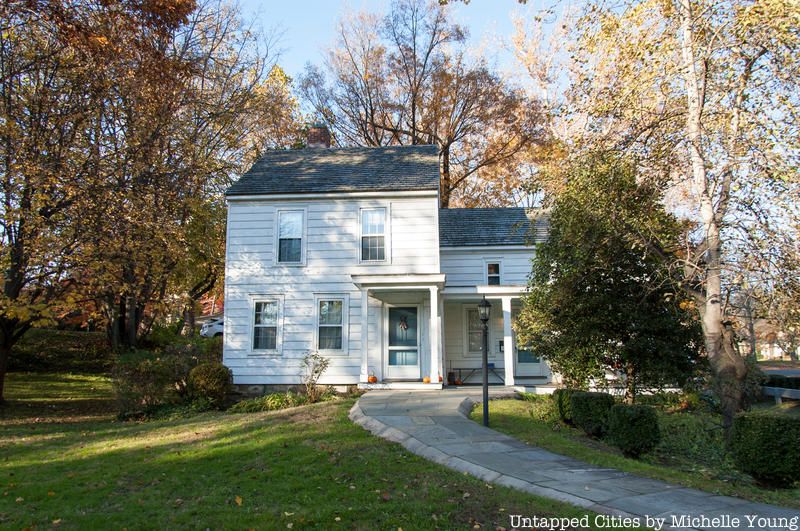
New Rochelle was also home to an important Revolutionary War figure: Thomas Paine, author of Common Sense, the influential pamphlet that “went viral” throughout the American colonies and put forth a clear, easy-to-understand rationale for independence from the British crown. In 1784, the State of New York gave Paine a 277-acre farm, confiscated from a British supporter, as a tribute to his role in the war. When Paine returned from France in 1802 (where he was arrested for almost a year for his role in the French Revolution), he lived in a cottage on the farm for four years, even surviving an assassination attempt on the first floor. Paine wrote his last pamphlet while living here, entitled “Constitutional Reform.”
Today, the Thomas Paine Cottage sits in a small park close to New Rochelle High School, moved from its original location but within the original farmstead property. It is open to the public as a museum on Thursdays, Saturdays, and Sundays, run by the Huguenot & New Rochelle Historical Association.
The Thomas Paine Cottage is located at 20 Sicard Avenue.

Located next to the Thomas Paine Cottage, New Rochelle High School is quite possibly one of the most stunningly situated high schools in the nation. The Collegiate Gothic brick building with carved stone details, reminiscent of a European castle, emerges from behind a lake. The school was designed by the firm of Guilbert and Betelle, known for their work on many East Coast schools, many of which are listed on the National Register of Historic Places. The high school is the only high school in New York State to house a museum (and it also has a planetarium!).
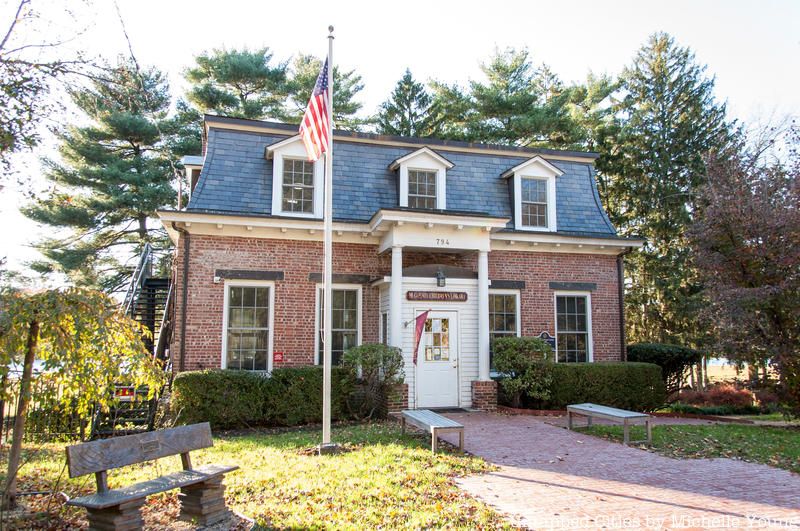
Huguenot Children’s Library
The lake in front of New Rochelle High School was once part of an ice manufacturing business run by the Mahlstedt family. Along North Avenue, an adorable brick library, the Huguenot Children’s Library (a branch of New Rochelle Public Library), was the home of the Mahlstedt family for three generations starting in 1869. The library was saved by citizen activism following a closure in 1992 during the financial crisis. An all-volunteer committee raised funds to renovate and rehabilitate the building and operate the library. Today, now fully funded by the City of New Rochelle, the Huguenot Children’s Library is the only freestanding children’s library in Westchester. Just next door the library is Jack’s Friendship Garden, a playground for children of all ages and abilities.
New Rochelle High School is located at 265 Clove Road and the Huguenot Children’s Library is located at 794 North Avenue.

What makes the city of New Rochelle particularly unique is that it is both urban and suburban, and everything in between. Within its downtown, the Main Street is a must-visit. It contains buildings and historical remnants from every period of the city’s 330-year history, making downtown New Rochelle one of the oldest Main Streets in the nation. “Every architectural style is represented in this community,” says Barbara Davis, the city historian, as she walks us around the neighborhood. The heyday of downtown New Rochelle, says Davis, was really between 1880 and the Great Depression. As such, New Rochelle’s downtown has one of the most contiguous collections of Art Deco architecture in the area, according to historian Frank E. Sanchis, author of American Architecture, Westchester County.
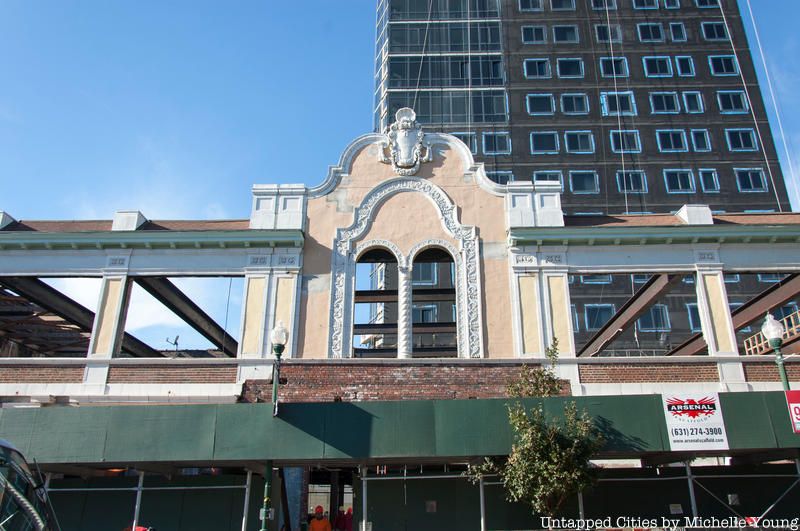
How did New Rochelle come by such a concentration of notable architecture? The answer lies in the city’s proximity to New York City, with an economy fueled by and in support of it, enabled by the railroad. Davis says that “by 1938, New Rochelle was the wealthiest city per capita in New York State and the third wealthiest in the country. No expense was spared. They used the best materials, the best architects to lure in the money. And it was a thriving downtown.”
The scale of the street, even despite new development, gives Main Street a quaint, Americana feel. Wooden Colonial Revival buildings stand side-by-side with buildings in the Federal, Romanesque Revival, Neo-classical, Italianate, and Art Deco styles. There are even a few Art Moderne and mid-century buildings.
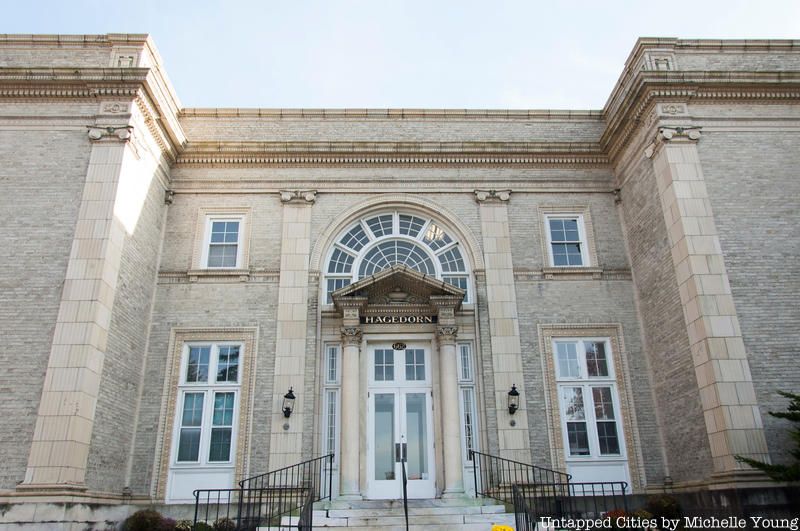
Look out particularly for the Loew’s movie palace at 587 Main Street, now being turned into a 28-story mixed-use development by RXR Realty that will retain the original facade, the original New Rochelle Public Library, an Andrew Carnegie library that is now a publishing house at 662 Main Street, the Art Deco Palace Building at 518 Main Street, and the former National City Bank of New Rochelle at 491 Main Street, designed by Henry Bacon, architect of the Lincoln Memorial in Washington D.C. For a touch of the new, Main Street is also home to Encore, the first eSports center to open in the county.
And stay tuned next month for our walking tour guide to downtown New Rochelle.
New Rochelle has over nine miles of waterfront if you include the inlets and off-shore islands, which were formed by the retreating of the glaciers eons ago. Fortunately, many of these islands have been turned into parks offering waterfront accessibility to the public.
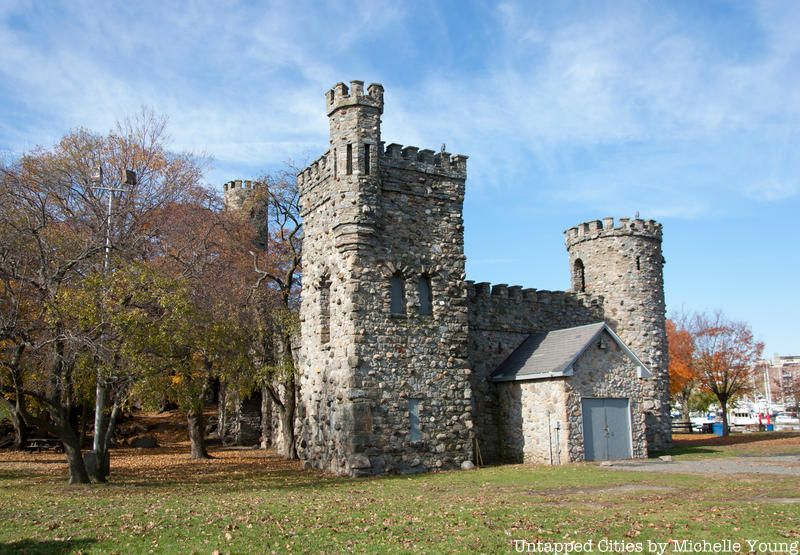
New Rochelle was once home to the Glen Island Resort, one of the country’s earliest amusement parks, pre-dating Disneyland by more than fifty years. The brainchild of local legend John Starin, Glen Island was actually a combination of eight islands off of New Rochelle, which could be accessed by steamboat from Manhattan. The islands of the summer resort, each celebrating a different Western culture, were connected by smaller ferries, piers, causeways, and footbridges. The Starnburg Castle (now known as Glen Island Castle) was part of Kleine Deustchland (Little Germany), and used as a beer garden and restaurant featuring waiters in lederhausen. According to guide written by Barbara Davis, Glen Island Resort featured “restaurants, game rooms, a zoo, an aviary, a museum of natural history, bridle paths, beaches, a miniature railroad, and more.”
A drawbridge, still in use today, was built in 1920 to connect Glen Island to New Rochelle, and the islands were filled in to become the 130-acre, Glen Island Park, the second busiest park in Westchester County. The Glen Island Casino from the Big Band era is now a restaurant and there are plenty of picnic areas, pavilions, open space and walkways, along with an active boat launch and a large crescent-shaped beach which opens onto Long Island Sound. From there, you can actually see New York City and Long Island.

Five Islands Park is located north of Hudson Park & Beach and accessed via Lefevre Lane. The largest island, Clifford Island, has a beach, picnic area, sandy beach, and recreational areas. Wooden pedestrian bridges take you from Clifford Island to Little and Big Harrison island, the latter which has a fishing dock and an open air pavilion. A waterfront pathway surrounds the landscaped islands. Two other islands, Tank and Sedge islands, are part of the 15-acre park but can only be accessed via boat.
Five Islands Park was opened in 1981, when Clifford Island was known as Oakwood Island. The opening was seen as an important civic moment, as the city was looking to turn around its economy. Transforming these islands into parks instead of allowing for more luxury real-estate development was a key gesture. At the time of the opening, New Rochelle’s City Manager, Samuel C. Kissinger, told The New York Times, “Our intention is not just to bring commerce and industry, but to keep this city as a vital place for those who live here.”
Davis tells us that when she meets young couples and families who have relocated to New Rochelle, the reasons they cite for relocating here are walkability, the character of the city’s downtown, the character of the city’s neighborhoods, and the arts scene. “We’ve always been a strong arts community,” says Davis, starting from painter Frederick Remington in the 19th century to pop artist Charles Fazzino today, whose main studio is located in New Rochelle just off Huguenot Street. In between, New Rochelle attracted actors, musicians, and many illustrators connected to Terry Toons, a rival company of Disney in animation. Historically, there has been a “groundswell of artists working here,” says Davis, “There’s a very good sense of the arts and support of the arts.”
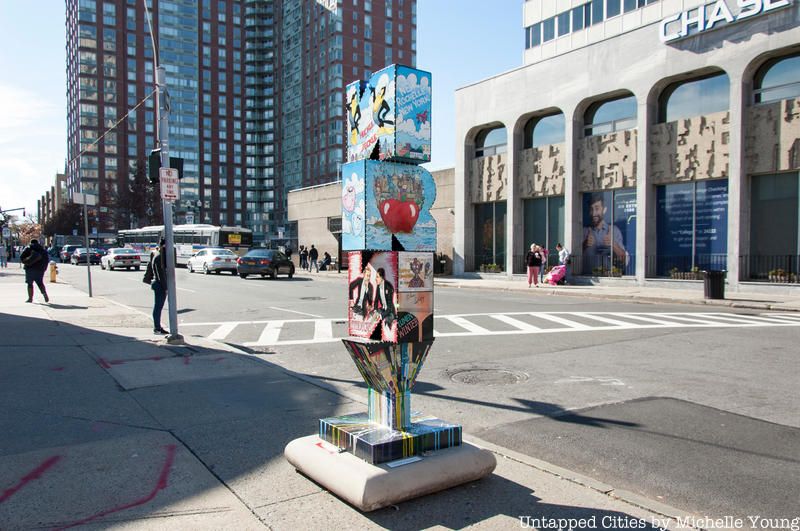
Earlier this year, the City of New Rochelle’s Municipal Arts Commission and Department of Development unveiled “Stacked!”, a series of fifteen fiberglass sculptures in the the shape of the “Ideally Yours” city logo which features the letters NRNY stacked atop each other.
Each NRNY sculpture was painted by different artists, selected through an open call around the country. The first two sculptures to be installed were by Charles Fazzino and his daughter Heather Fazzino at the intersection of North Avenue and Huguenot Street. Charles Fazzino’s piece looks at the history of artists in New Rochelle, featuring characters like Mighty Mouse and Woody the Woodpecker, which were created here at Terry Toons, as well as references to artists like Norman Rockwell, who lived in New Rochelle for 25 years. Heather Fazzino’s piece looks forward, using graffiti to portray some of the city’s main thoroughfares.
The “Stacked!” sculptures are part of the city’s self guided narration app on Otocast. You can hear the artists, including the Fazzinos talk about their work, through the app.
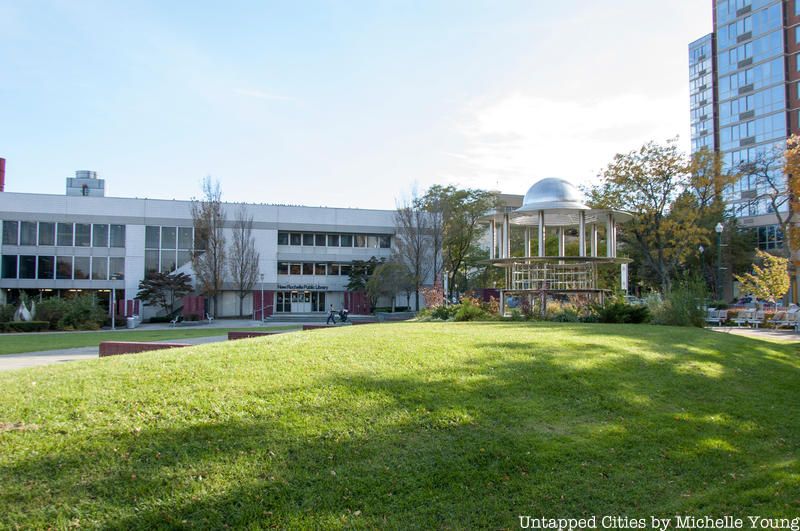
In Ruby Dee Park, the green space right in front of the New Rochelle Public Library, is the Walk of Fame. Here, you can find plaques of New Rochelle’s notable residents, including Lou Gehrig, Jay Leno, Norman Rockwell, film director Elia Kazan, Don Hewitt of “60 Minutes,” novelist E.L. Doctorow, Don Mclean (singer-songwriter, known for “American Pie”), composer Alan Menken, Walter Lanz (creator of Woody Woodpecker), and many more.
The interpretive signs have biographical information that showcase the illustrious history of New Rochelle’s famous residents. The park is named after actress and activist Ruby Dee, who is also featured in the Walk of Fame, along with her husband Ossie Davis, for whom the theater inside the New Rochelle Public Library is named after. They were two of the many Civil Rights activists that made New Rochelle home in the 1960s.
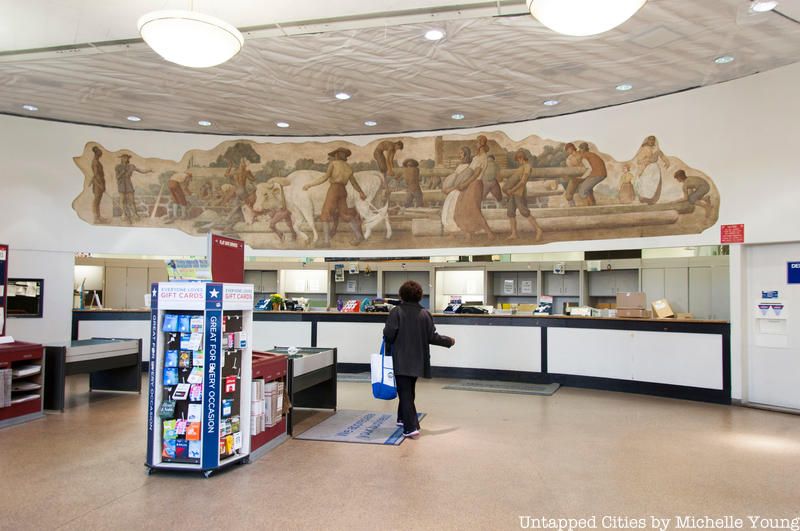
Built in the Art Moderne style, the New Rochelle Post Office features two large WPA-era murals by David Hutchinson, a New York City-based artist that tell the history of New Rochelle. One mural depicts the arrival of the Huguenots and the other shows the sale of the New Rochelle land tract from John Pell of Pelham Manor to the Huguenots. The post office is listed on the National Register of Historic Places, although its original terra cotta exterior (a rare material in United State post offices) was replaced with brick in the mid-20th century.

At 302 Huguenot Street, R Café and Tea Boutique is just a four minute walk from the New Rochelle Metro North train station. The cozy, art-filled cafe has a large selection of coffees and teas, as well as savory sandwiches, quiches, and soups, and sweet pastries. The chabby chic decor is complemented by an original tin ceiling and art on both side walls by rotating artists that can be purchased. The cafe describes itself as a “sanctuary for local artists, writers and creative people.”

Situated in one of the oldest buildings in downtown New Rochelle, the Gnarly Vine is a wine bar and restaurant that has been in business for more than a decade. It has a warm and inviting interior of wood and red brick and a menu of market to table dishes by owner and chef William Leon. You’ll find small plates, cheese and charcuterie, a raw bar, Neapolitan-style pizza from an imported 900 degree oven, along with the entrees like Sicilian meatballs, tuna tartare, Gorgonzola and pear flat breads, herb-crusted garlic shrimp, and barbecue sliders made of ingredients sourced at the local farmers market and fish mongers.

The cuisine in New Rochelle is worth multiple visits, as the city’s diverse, multicultural residents have created a plethora of restaurants along the international spectrum worth checking out. You’ll find Peruvian and Spanish food at Patria’s tapas and wine, Croatian food at Dubrovnik Restaurant, Colombian food at Colombian House Restaurant, Italian at Modern (in a stunning former car dealership on Huguenot Street) and at Posto 22, Mexican and Peruvian at Salsa y Brasa, Indian at Coramandel Cuisine of India, soul food and Caribbean at Alvin & Friends, and much much more.
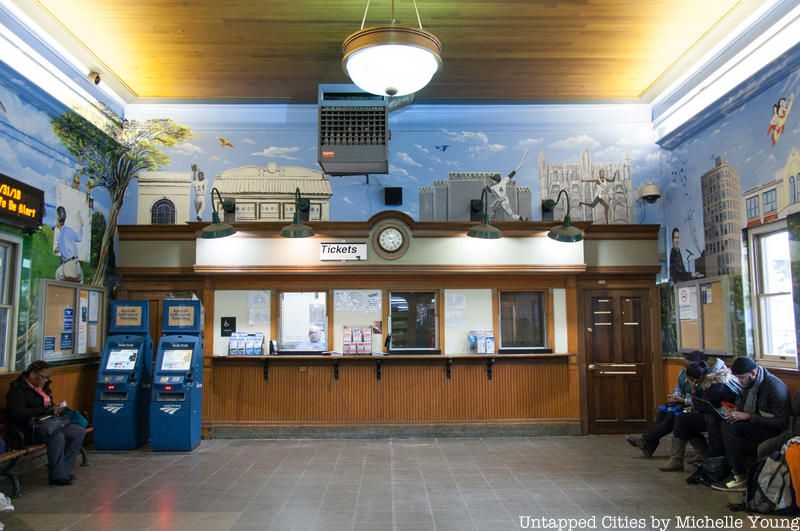
It’s easy to get to New Rochelle. By Metro North, it’s exactly a 33 minute train ride from Grand Central Terminal to New Rochelle Train Station. The station in New Rochelle has the feel of a 19th century depot with a gabled roof and a wood paneled waiting room that has a bank of ticketing windows and a concierge pavilion.
Fun fact: In 1941, the New Rochelle train station was the first in the nation to install a commuter banking branch. Termed a “midget branch”, the 7 foot x 5 foot branch of the First National Bank of New Rochelle was located in a former shoe-shine stand in the New Rochelle train station, with a door only 3 feet high and 20 inches wide.
Also, New York City Metrocards (including the monthly) can be used on all Westchester Bee Line buses, and you can transfer from the subway. The Bee Line 60 runs from Fordham Road in the Bronx to New Rochelle, so you can literally get to the city on a single Metrocard ride!
Go explore what New Rochelle has to offer and stay tuned next month for our guide to downtown New Rochelle!
Subscribe to our newsletter